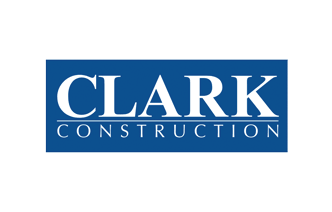Why is construction so hard?
 For the last several years I have been opening many of my presentations with the statement that “construction is really hard.” It’s an interesting statement, because the reaction really depends on the audience. If I am speaking to a bunch of seasoned construction managers, they look at me and say “no kidding.” If it’s a bunch of non-construction people, they look at me and say “really…why?” And if it’s a room full of new construction professionals, they look at me and say “wow, I’m glad you said that because I thought it was just me!” It really is hard. If it was easy, there would be more big companies.
For the last several years I have been opening many of my presentations with the statement that “construction is really hard.” It’s an interesting statement, because the reaction really depends on the audience. If I am speaking to a bunch of seasoned construction managers, they look at me and say “no kidding.” If it’s a bunch of non-construction people, they look at me and say “really…why?” And if it’s a room full of new construction professionals, they look at me and say “wow, I’m glad you said that because I thought it was just me!” It really is hard. If it was easy, there would be more big companies.
If it was easy, we wouldn’t have the highest rate of injuries among all other industries, or one of the highest rates of suicides. If it was easy, we wouldn’t be being constantly criticized for not making any gains in productivity over that last several decades.
The real question is, why?
The answer is long, but it's somewhat straightforward. The answer lies in the nature of the business itself. Let’s take a look.
Everything we build is a prototype, but we are expected to perform as though we are in mass production.
Elon Musk (Tesla) once made the statement that “prototyping is easy, its scaling up to production that’s really hard.” In construction, every project is essentially a prototype. Its unique. An architect and team of designers has created a facility or structure that is meant to fulfill the needs and desires of a particular client, with a particular budget, building on a particular site. As we, the construction team, take on these projects, we are highly unlikely to ever see two identical projects. Even when we work building so called “repetitive” structures, the site-specific conditions always bring unique solutions. For example, I worked building ministorage facilities for U-haul for several years. I supplied materials and services to dozens of these projects, all over the U.S., all designed by the same team for the same client. However, each was unique owing to variables such as site conditions, lot size, zoning restrictions, and anticipated demand.
Yes, there were certainly lessons to be learned and built upon as we completed each facility, but there was always something new that meant that each project was unique. Even when facilities were very similar, one thing that was sure to change was the people building it. And that’s where construction gets even harder.
The team always changes, even when we hire the same contractors
Take the same structure and attempt to build it in several different locations, and one thing is almost certain. You will have different people building each structure. This makes it incredibly difficult to learn, grow, and scale up, and there is very little we can ever do about that. The owner can hire the same General Contractor, but the personnel on the team is likely to change. The General Contractor can attempt to hire many of the same trade contractors, but this becomes problematic when changing geographic locations as many trade contractors are smaller companies who’s work area may not span the larger geographic area.
Even when they manage to hire a few of the same trade contractors, the overall team is still different. There will always be new trades in the mix that are required to work side by side with each other for the first time. Even the repeat trades are unlikely to staff the project with all the same personnel as the last project, and work practices tend to vary from office to office, even within the same company.
We can checklist the parts that are complicated, but we cannot checklist the complex
I have been writing lately about the difference between complicated and complex. Our projects are always complicated. They always have many parts and pieces. But we can design systems to manage these complicated challenges. Starting during the design phase, we can move to more collaborative methods of project delivery that incorporate early contractor engagement (such as CM at Risk or IPD) in order to develop design documents that lead to a constructable facility and that don’t result in confusing and time consuming additional requests for information (RFI) during the build process.

We can utilize technology such as Building Information Modeling (BIM) to facilitate this design process and to ensure the design aligns with the owners expectations before building commences. We can use shared digital drawings to improve team collaboration and speed information sharing to greatly reduce re-work.
What we cannot do, or at least not to the extent that we would like to, is use some of these centralized “command and control” systems to solve our “complex” challenges. The challenges posed by the fact that we cannot anticipate who will be out on the site, doing the actual work. It will almost never be the same team as the last project. There will be different trades, and even the same trades will have different personnel. The CPM schedule we used on the last project will be a great starting point for facilitating the planning and scheduling processes, but it won’t ever match exactly. Again, site conditions change and local ordinances dictate a slightly different look, all leading to changes in procurement and planning. Crew sizes will vary from the last time, as will material availability.
All this means that we need to know when to switch from the “command and control” structure and style over to a system that thrives in a decentralized environment. One that both empowers and supports the teams in the field, at the actual site, to make plans, decisions, and commitments in order to maintain the throughput on the project. This means that projects cannot be successfully controlled from the main office, by a team of upper-level managers. This doesn’t work. It doesn’t matter how good that office team is, there are just too many variables that will be presented in different combinations each and every day, and if the team in the field is not empowered to deal with these variables, the project will suffer. We will have re-work, and scheduling delays, and safety issues.
This is why construction is hard.
What’s the solution?
The solution is both simple and difficult at the same time. The solution involves upper-level management developing systems to ensure that important elements are not missed on these complicated projects. Systems that embrace the latest technology to facilitate collaboration and speed the sharing of information with the entire project team. It also involves recognizing the fact that your check lists and instructions will not be able to account for all the variables that get presented in the field, so you will need to adopt a decentralized method of management that empowers the field personnel to make decisions that are in the best interest of the project. Different approaches to project management such as Lean can provide a framework for this, but one thing that people seem to fail to discuss when implementing Lean is the absolute importance of using trained and knowledgeable individuals in the process.
I don’t mean that they are experts in Lean. I actually don’t care about that very much. They need to be experts in their trade. One individual on the team can facilitate lean thinking and practices, but the other people on the team need to have the training and the experience needed to make informed decisions if the concept of decentralized decision making is going to be successful. That’s why construction is hard, and that’s why there is no single solution to making it easier.
One thing that people seem to fail to discuss when implementing Lean is the absolute importance of using trained and knowledgeable individuals in the process.
Adopting Lean Construction principles to optimize project throughput will not work in a design-bid-build, low bidder takes the job, environment because each trade contractor is looking out for themselves and trying to make some money on their low bid. They care about that over the project every time. In addition, using an alternative form of project delivery method that engages the general contractor early in the design phase may have only limited success if the general contractor does not also engage at least the major trades early in the process to leverage their expertise. Failing to compensate these companies for their expertise only results in them finding ways to get paid later (change orders). And none of this matters much if we decentralize decision making and put it in the hands of people who are not qualified or equipped to make proper decisions for the betterment of the project.

All of this starts with education. If we are working to change construction for the better, we have to start by teaching the people in the industry about the alternative ways of thinking; why they are important and why they should care. We need to teach people not only how to use the new technology that we are adopting, but how they can leverage it to reduce re-work, increase safety, and improve their bottom line.
As we are training and upskilling our management and our workforce, we also need to be developing a culture within our companies, and on our job sites, that supports decentralized decision making and separates the complicated processes that we can outline and checklist, from the complex processes that need to be solved collaboratively in the field, at the project workface.
Editor’s note: Fieldwire is proud to feature construction expert Jim Rogers on our blog. Jim has decades of experience in construction management and safety, and is an instructor for LinkedIn Learning — an online library of video courses taught by industry experts from across the globe. LinkedIn Learning is a great source for construction management education and content, and it’s included if you have a LinkedIn Premium account.
Jim enjoyed learning about Fieldwire so much that he created an online course on how to use Fieldwire to manage construction drawings and processes. He then created this blog post for our readers who are eager to learn more about QA/QC processes.

 Jim Rogers •
Jim Rogers • 


















